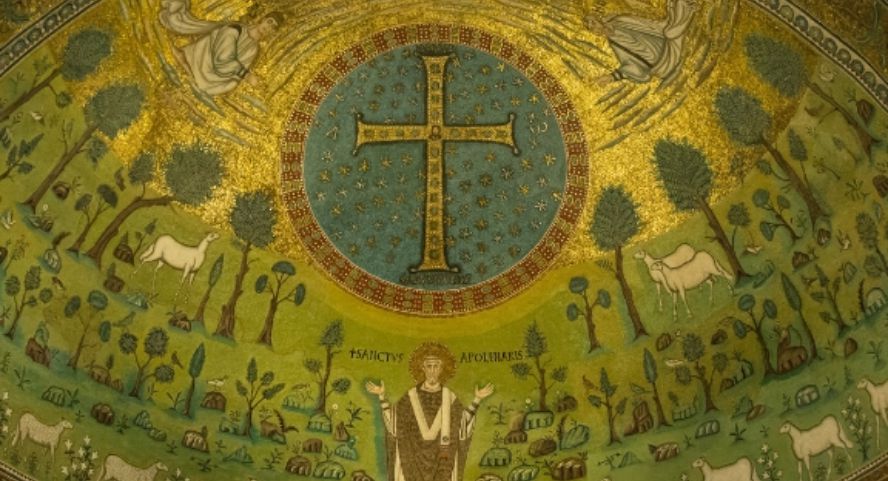Old Testamental miracles in "Paschale carmen" by Sedulius
Tatiana Krynicka
Uniwersytet Gdański , PolandAbstract
Before turning to the wonderful Saviour’s deeds, that he strives to praise in Paschale Carmen, Sedulius introduces his reader into the old testamental history of salvation. In the Book 1, which fulfils the functions of a preface to the poem, he recounts 18 miracles that took place before Christ was born, since the ages of the Patriarchs to the period of the Babylonian captivity. These relations appear to be separate, self-contained stories. The longest is devoted to the miraculous fate of the prophet Elijah (lines 170-187); in the shortest the poet tells about the Balaam’s donkey, an animal without speech, who spoke to its master with a human voice (lines 160-162). Miracles fascinate Sedulius as extraordinary events, which deny the laws of nature and contradict common sense. At that they are sometimes connected with a marvelous metamorphosis. God performs miracles in order to show to the mankind His might, providence and kindness; to educate human beings and to prepare them for the coming of Christ; to foretell cosmic redemption at the end of times. Telling about the old testamental miracles Sedulius tends to refer both to the unbelievers and to the believers the revealed truth. He also aims to awake in the readers’ hearts wonderment, gratitude, love and trust towards the Holy Trinity.
Keywords:
Sedulius, miracle, Bible, metamorphosis, paradox, Elijah, prefiguration, cosmic redemption, Divine MercyReferences
Ambrosius Mediolanensis, De Noe et arca
Ambroży, De Elia et ieiunio
Aulus Cornelius Celsus, De medicina libri octo, ed. C. Daremberg, Lipsiae 1859
Ausonius, Ephemeris 3, 1, ed. R. Green, Oxford 1991 (Crossref)
Balbuza K., Triumfator. Triumf i ideologia zwycięstwa w starożytnym Rzymie epoki Cesarstwa, Poznań 2005
Biblia Sacra iuxta vulgatam versionem, ed. R. Weber, Stuttgart 1983
Curtius E.R., Literatura europejska i łacińskie średniowiecze, tłum. A. Borowski, Kra¬ków 1997
Cytowska M. – Szelest H., Literatura rzymska. Okres cesarstwa. Autorzy chrześcijańscy, Warszawa 1994
Danielewicz J., Technika opisów w „Metamorfozach” Owidiusza, Poznań 1971
Fizjologi i Aviarium. Średniowieczne traktaty o symbolice zwierząt, tłum. i oprac. S. Kobielus, Tyniec 2012
Fontaine J., Naissance de la poésie dans l’Occident chrétien, Paris 1981
Forstner D., Świat symboliki chrześcijańskiej, tłum. W. Zakrzewska – P. Pachciarek – R. Turzyński, wybór ilustracji i komentarz T. Łozińska, Warszawa 1990
Gacia T., Metaforyka agonistyczna w literaturze łacińskiej chrześcijańskiego antyku, Kielce 2007
Gładysz B., Abecedariusz Seduliusza, „Kurjer Poznański” (1936)
Gładysz B., De extremis quibus Seduliana carmina ornantur verborum syllabis inter se consonantibus, Leopoli 1930
Gładysz B., Dogmatyczne teksty w poetyckich utworach Seduliusza. Studium z historii dogmatów V wieku, Poznań 1930
Green R., Latin Epics of the New Testament. Juvencus, Sedulius, Arator, Oxford 2006 (Crossref)
Izydor z Sewilli, Liber de viris illustribus, ed. C. Codoñer Merino, Salamanca 1964
Jelonek T., Księgi historyczne Starego Testamentu, Kraków 2006
Jelonek T., Teologia biblijna, Kraków 2011
Krynicka T., „Desine gentilibus iam inservire poetis…” (Versus XI 9). Chrześcijańscy epicy w bibliotece Izydora z Sewilli, Vox Patrum 60 (2014) 191-207 (Crossref)
Lausberg H., Retoryka literacka. Podstawy wiedzy o literaturze, tłum. A. Gorzkowski, Bydgoszcz 2002
Malsbary G., Epic Exegesis and the Use of Vergil in the Early Biblical Poets, „Florilegium” 7:1985 (Crossref)
Mazzega M., Sedulii Carmen paschale, Buch III, Basel 1996
Miggelbrink R., Gniew Boży. Znaczenie pewnej gorszącej tradycji biblijnej, tłum. A. Wałęcki, Kraków 2005
Ovidius, Metamorphoses, ed. R. Merkel, Lipsiae 1888
Quintilianus, Institutio oratoria, ed. L. Radermacher, Leipzig 1971
Roberts M., Biblical Epic and Rhetorical Paraphrase in Late Antiquity, Liverpool 1985
Roberts M., The Jeweled Style. Poetry and Poetics in Late Antiquity, Ithaca 1989
Rusecki M., Traktat o cudzie, Lublin 2006
Sedulius, Epistola ad Macedonium
Sedulius, Paschale carmen
Sedulius Caelius, Alegoreza w „Paschale carmen” Seduliusza, RH 48 (2000) z. 3, 93-109
Sedulius Caelius, Inwokacja w „Paschale carmen”, w: Christianitas et cultura Europae. Księga jubileuszowa profesora J. Kłoczowskiego, red. H. Gapski, cz. 1, Lublin 1998, 30-39
Sedulius Caelius, Opera omnia. Dzieła wszystkie. Tekst łacińsko-polski, tłum. i oprac. H. Wójtowicz, Lublin 1999, 86-221
Słapek D., Sport i widowiska w świecie antycznym, Warszawa 2010
Springer C., The Gospel as Epic in Late Antiquity: The Paschale carmen of Sedulius, Leiden 1988 (Crossref)
Szczepanowicz B. – Mrozek A., Atlas zwierząt biblijnych: miejsce w Biblii i symbolika, Kraków 2007
Terentius, Andria, ed. J. Sargeaunt, London – Cambridge 1953
Titus Livius, Ab urbe condita, ed. F. Fügner, Leipzig 1926
Winniczuk L., Ludzie, zwyczaje i obyczaje starożytnej Grecji i Rzymu, Warszawa 2006
Wójtowicz H., Apostrofa w I księdze „Paschale carmen” Seduliusza, „Classica Wratislaviensia” 20:1996
Wójtowicz H., Elegia Se¬duliusza, w: Elegia poprzez wieki. Konferencja naukowa 8-9 XI 1994, red. I. Lewandowski, Poznań 1995
Wójtowicz H., Grzech pierworodny w twórczości Seduliusza, Vox Patrum 32-33 (1997) 277-289 (Crossref)
Wójtowicz H., Katecheza w poezji Seduliusza, w: Orbis antiquus: studia filologiczne i patrystyczne. Księga Pamiątkowa dedykowana Księdzu profesorowi Henrykowi Wójtowiczowi z okazji 70. rocznicy urodzin, red. N. Widok, Opole 1998
Zawada M., Niewyczerpana historia ognistego proroka. Cykl Eliasza i Elizeusza w komentarzu duchowo-mistycznym, Poznań 2010
Uniwersytet Gdański
License
Papers published in Vox Patrum are covered by the Attribution-NoDerivatives 4.0 International (CC BY-ND 4.0) licence. Authors and users can use published works licensed under the CC-BY-ND since 2018. For earlier publications, copyrights are available under fair use rights in accordance with the Act of February 4, 1994 on copyrights and related rights.







